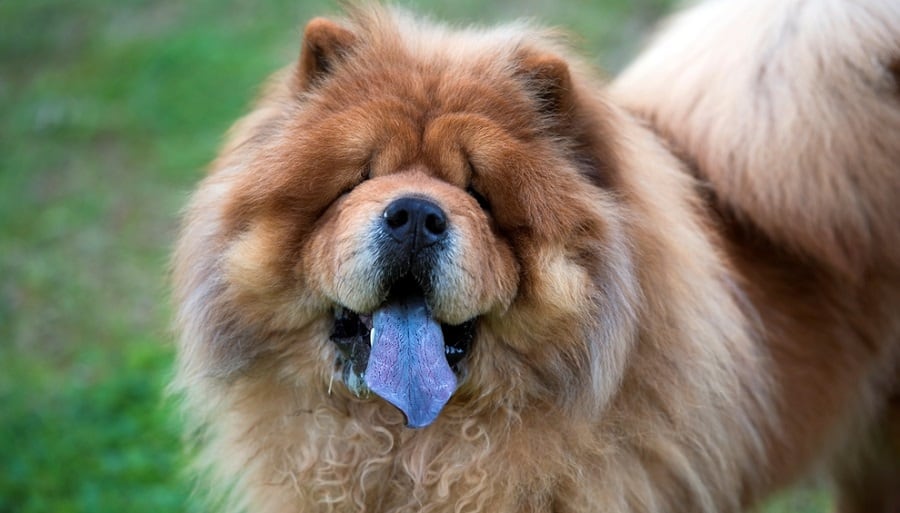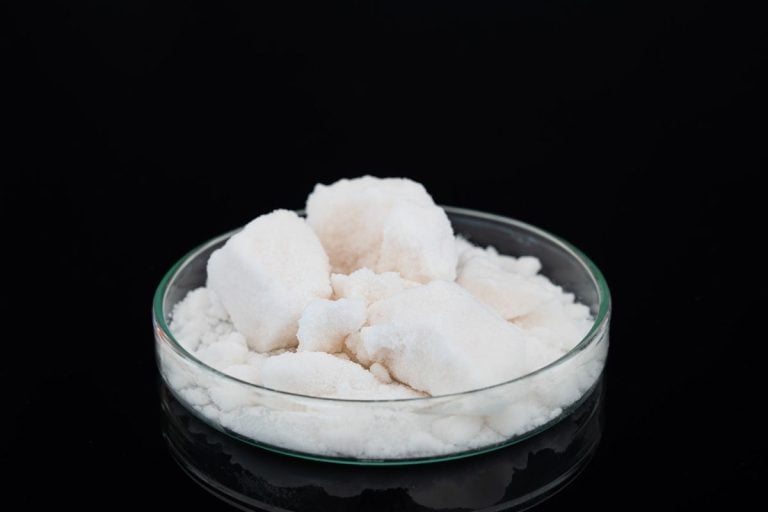Dog Tongue Color Chart – Tongue Color Symptoms & Causes
It can be difficult to determine whether the color of a dog’s tongue is natural or a symptom of a health problem. That is why a dog tongue color chart says a lot about the overall health of your dog.
The mouth of a dog including their gums, teeth, and tongue are great indicators of their general health, especially if their tongue is usually pink and has turned purple or blue.
This article will provide you with information about what causes a change in the color of your dog’s tongue, the anatomy of your dog’s tongue, and how you can brush it.
Dog Tongue Color Chart

The tongue of dogs contains mucus membranes that show the state of blood circulation in your dog. If your dog does not have naturally blue or purple tongues, then it should be a shade of pink except for a few dogs.
However, there are instances where your dog has eaten something like beetroot and their tongue changes to purple, there is nothing to worry about.
But, if they eat something toxic and their tongue color changes, you should take them to the vet immediately.
The following dog tongue color chart will help you understand the state of your dog’s health:
| Color | Symptoms | Causes | What To Do |
|---|---|---|---|
| Pink | None | Healthy | Nothing |
| Purple/Blue | Lack Of Oxygen | Cyanosis, Hypoxia, Liver Disease | See A Vet |
| Red | Tongue Swelling, Black Spots | Melanoma, Diabetes, Bacteria, Kidney Problems | See A Vet |
| Yellow | Yellow Discoloration | Gall Bladder, Liver, or Gastritis Malfunction | See A Vet |
| White/Pale | Reduced Number Of Red Cells | Leukemia, Anemia, Internal Bleeding, Parasites | See A Vet |
Pink Tongue Color
This is a common color in most dogs. If the tongue of your dog is pink, it means that they are healthy.
For some breeds, their pink tongues have blue or black spots because of some genetic history where the parents were crossed with dogs who have blue tongues.
Purple/Blue Tongue Color
A purple tongue in dogs is associated with a lack of oxygen (hypoxia) unless your dog is a breed with a blue tongue. The coloration caused by the lack of oxygen is called cyanosis.
Hypoxia is mainly caused by respiratory and heart disease, that is why it is crucial to take your dog to the vet when this happens.
When this condition is severe, your dog may collapse, they may be cold to touch, and their gums and tongue can turn to grey from purple.
A blue tongue can also be caused by organ stress, hepatitis, liver disease, or an autoimmune issue.
Red Tongue Color
If your dog has a red tongue, he may also have black spots or swelling. This is normally due to melanoma, which is a type of cancer. The dog’s tongue will grow bigger as the disease advances because of the accumulation of cancer cells.
A red tongue can also be caused by diabetes, bacterial infection, kidney or bladder problems, fever, accumulation of toxins, or hyperthyroidism.
Yellow Tongue Color
If the color of your dog is yellow, they may have a gall bladder, liver, or gastritis malfunction. The yellow discoloration of the tongue shows that they are jaundiced.
White/Pale Tongue Color
In most cases, if a dog has a white tongue, it shows that the number of red blood cells has reduced in the dog.
In some cases, it is because of health changes and your dog may be suffering from leukemia, anemia, internal bleeding, poisoning, or illnesses caused by parasites like ticks. If this is the case for your dog, you should take them to the vet for a medical checkup.
Dogs With Naturally Black & Purple Tongues

There are a few breeds that have naturally purple tongues. The tongue may have different shades where some appear to be black while others appear to be very blue.
The Chow Chow is the most popular dog with a blue tongue and many Shar-Pei dogs also have tongues with this color.
The reason for the Chow Chow to have the unique tongue is attributed to genetics just like other physical characteristics.
The color difference is due to a mutation that has been passed down from one generation to the next. This makes it possible for mixed-breed dogs or mongrels to have a blue tongue.
However, if your dog is not a purple tongue breed and the tongue turns purple, you should be careful. Bluish purple patches on a dog’s tongue can be caused by physical trauma like bruising which leads to swelling.
Black tongues in dogs can be caused by heatstroke where there is an increase in body temperature.
What Can Cause Purple Tongue in Dogs
The main cause of purple tongues in dogs is lack of oxygen, but there are other causes.
Some may naturally relieve themselves while others require immediate veterinary attention. The following are the main causes of purple tongue in dogs:
- Foreign body – foreign bodies can get lodged in your dog’s throat causing choking which leads to a lack of oxygen. In this case, the dog will be gasping for air, restless, extend their necks, or become unconscious.
- Tiredness on cold water – even dogs who are used to swimming can be short of breath and fatigued. Being trapped or drowning in an icy lake can cause the bluish color of the tongue.
- Pneumothorax – this is a less common cause and is due to the abnormal air collection in your dog’s chest. Blunt force trauma can cause this issue and if your dog has been involved in an accident, their tongue may turn purple.
- Smoke inhalation – smoke from a fire causes asphyxiation which can lead to a lack of oxygen. If your dog inhales the smoke and does not have access to fresh air for oxygen, their tongue can turn purple.
- Pleural effusion – this is the accumulation of blood or fluid in the chest. It can be caused by pneumonia, trauma, kidney, heart, or liver problems. It leads to issues in the respiratory system and can make the tongue purple.
- Poisoning – if your dog ingests some type of poison, they may lack oxygen which makes the tongue purple.
Dog Tongue Anatomy

The tongue of a dog is a stretched muscular organ filled with a complex network of veins, arteries, and capillaries. Its surface is covered with specialized epithelium.
The following best describes the anatomy of a dog’s tongue:
- There is a group of tissues underneath the tongue known as the frenulum that holds it down.
- Under the tip of the tongue, there is a cartilaginous bony structure known as the lyssa running along the midline from the front to the back.
- There are four pairs of salivary glands in a dog’s tongue with tiny ducts that transport saliva to the mouth. These glands produce plenty of moisture in the mouth by secreting thick(mucoid) saliva and watery-thin(serious) saliva. The surface of the tongue also contains lots of salivary glands that secrete both the mucoid and serious fluid.
- Dog’s tongues have fewer taste buds than humans. Humans have 9,000 taste buds while dogs have 1,706 taste buds.
- Salty taste is along the rear side and side edges of the tongue, the sweet taste is at the beginning and the sides of the tongue and the sour taste is evenly spread on top of the tongue.
- Despite the smaller number of taste buds, dogs always choose meat-oriented diets. However, without the sense of smell, they cannot differentiate between beef, chicken, pork, or fish.
How To Brush Your Dog’s Tongue
Your dog’s tongue can be filled with bacteria that cause odor as well as natural flora needed to maintain a healthy mouth. Brushing your dog’s tongue regularly is needed to maintain good oral health as well as improve your dog’s breath.
You can use a small human brush or a small dog toothbrush for brushing your dog’s tongue. Since dogs like licking, you can make the brushing process more fun by using a dog tongue brush.
This allows your dog to brush their tongue by licking the rough surface. This process is much easier than opening their mouth and manually brushing their tongue.
You can use food on the tongue toothbrush to get your dog to brush their tongue, but do not use human toothpaste because it is dangerous for your dog’s health.
Health Conditions of The Dog Tongue
The following are the most common health problems that can affect your dog’s tongue:
- Glossitis – this is the inflammation of the tongue that can be caused by burns, lesions, lacerations, insect stings, autoimmune disease, and other diseases such as Bartonella.
- Oral Papillomatosis – this is a viral infection that leads to the formation of lesions throughout the tongue of your dog.
- Ulceration – this is a symptom of underlying health conditions such as cancer or acute renal failure. It can be caused by bacterial infection, heat stroke, decreased blood flow, or poison.
- Stomatitis – it causes inflammation of the tongue and other soft tissues in the mouth.
- Soft tissue trauma – as dogs explore and chew anything that may come their way, they may get burns, cuts, and lacerations which may lead to inflammation in the tongue.
- Tumors and cancers – these conditions appear as lesions on the tongue.
Final Words
Dogs like licking as a way of showing their loyalty, love, outgoingness, handshake, and pacifying gestures to you. Therefore, ensure that your dog’s tongue is healthy by visiting the vet when you notice a color change, and by regularly brushing their teeth.
A healthy tongue will improve your dog’s oral health and overall wellbeing keeping them happy and ready to play with you.






